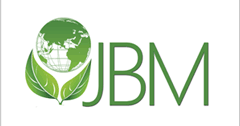Abstract
Recent study was directed to check the accumulation of Cd and Pb in pasture land treated with ground water. In particular the transfer of cadmium and lead from soil to forages and in turn to animal (buffaloes) was conducted in Bhalwal, Punjab, Pakistan which comes under sub-tropical environmental conditions. The Cd and Pb concentration in selected samples was explored by atomic absorption spectrophotometer (AA-6300 Shimadzu Japan). The results depicted the concentration of cadmium in water, soil, forages, milk and hair of buffaloes was in the range of 0. 00320 – 0.00866 mgL-1, 1.9500 to 5.3000 mg/kg, 0.300 to 0.7100 mgkg-1, 0.1033 to 0.4133 mgL-1 and 0.037 to 0.0656 mg/kg, respectively. The lead concentration was ranged from 0.004 mg/L to 1.963 mgL-1 for water, 5.960 -13.600 mg/kg for soil, 0.293 to 2.570 mg/kg for forages, 0.2166 to 6.100 mg/L for milk and 0.0206 to 0.074 mg/kg for hair samples. Various indices (BCF, PLI, EF, DIM and HRI) were examined and results presented that PLI and EF of Cd, EF and HRI for Pb was above 1 indicating that metal was causing pollution while value of BCF and DIM was below one. If exposed for an extended period of time through feed, forages with a higher Cd and Pb content may harm animal's cells, create respiratory issues and have an adverse effect on the animal's kidney, liver and lungs.
Article History
Received: Jul 28, 2024; Accepted: Aug 05, 2024; Published: Sep 30, 2024
Recommended Citation
Iqbal, Z.,
Parveen, K.,
Ahmad, K.,
Ahmad, T.,
Riaz, N.,
Hussain, A.,
Ashfaq, A.,
Zubair, F.,
Noorka, I. R.,
Ejaz, A.,
Memona, H.,
Mahpara, S.,
Gulshan, A. B.,
Aziz, T.,
Liaqat, T.,
Akhtar, M.,
Awan, M. F.,
Siddique, F.,
Alsubail, A.,
& Alhuthayli, R.
(2024).
Monitoring of Cadmium and Lead Accumulation in Soil-Forage-Animal Continuum in Pasture Land Irrigated with Ground Water in Bhalwal, Punjab, Pakistan,
Journal of Bioresource Management, 11
(3).





